What makes a fantasy story? Our first instinct might be to answer 'magic' - spells, mythical beasts, potions. Yet fantasy contains multiple key elements. Read the following simple breakdown of elements of the fantasy genre and tips to write magical, fantastical tales:
What are the main elements of fantasy?
Fantasy is (according to The Oxford Dictionary's definition):
'A genre of imaginative fiction involving magic and adventure, especially in a setting other than the real world.'
Many fantasy novels involve adventure as a key feature. Characters may discover portals to other worlds or discover hidden magic, wonder and surprise in our own world.
Novels from C.S. Lewis's classic Chronicles of Narnia series to J.K. Rowling's Harry Potter series populate imaginary worlds with mythical beasts, power-seeking tyrants and more.
Characters adventure through worlds where the impossible is possible. Exploring the 'impossible' is another common element in fantasy. Magical wands may weave spells that defy the laws of physics as we know them.
Other times magic is spoken, chanted, or ripples through land and landscape.
Let's explore individual elements of fantasy, with examples from books that suggest how to use each well:
5 elements of fantasy to consider:
- Magic
- Adventure
- Struggle for mastery
- Subgenre and types
- Place/setting and worldbuilding
1. Magic
The word magic comes from the Greek magikos, from magos. This means 'one of the members of the learned and priestly class'. This explains how magic, in fantasy, is often associated with learning, with complex books and rituals.
Magic has its roots in the idea of arcane knowledge the ordinary person cannot access. We can also trace the word back to the Old Persian magush, meaning 'to be able, to have power'.
Thus ideas of 'learning' and 'power' supplement its modern definition:
'The power of apparently influencing events by using mysterious or supernatural forces.' (OED)
Magic in great books takes many forms. The apprentice wizards in J.K. Rowling's Harry Potter duel with wands. In C.S. Lewis' Narnia series, a witch casts a spell over the Kingdom of Narnia, plunging it into eternal winter. She also destroys a secondary world by speaking 'the Deplorable Word'. This shows an important element of fantasy: Words have power. It ties back to the idea of priestly learning, of the idea that magic is a wonderful (yet potentially deadly) knowledge.
Practical ideas for using this element of fantasy
How do you use magic in a fantasy story? Think about how your story could show the following:
- The cost of magic: Just like using a car requires the 'magic' of fuel combustion (or electrical/solar power), magic can't come from nowhere. Often magic is something that can be depleted and must be replenished. Giving magic in your world finite supply explains why not all problems can be overcome using spells. It makes its power seem greater, due to its cost, too.
- The danger of magic: Fantasy novels are full of the dangers of magic. In Harry Potter, the prime villain uses a banned/forbidden killing spell that rebounds on himself. This also suggests the volatility in magic. The idea that 'having power' (in the Old Persian sense of the word) also comes with risk and danger.
- The wonder, delight or joy of magic: This is something J.K. Rowling captures so well in her series, earning her millions of loyal readers. Her books are filled with surprising uses of magic, from witches' broomsticks re-imagined as sports equipment to all kinds of mythical beasts and plants. How can you create a sense in your reader that there is a new surprise, a mystery, around each corner?
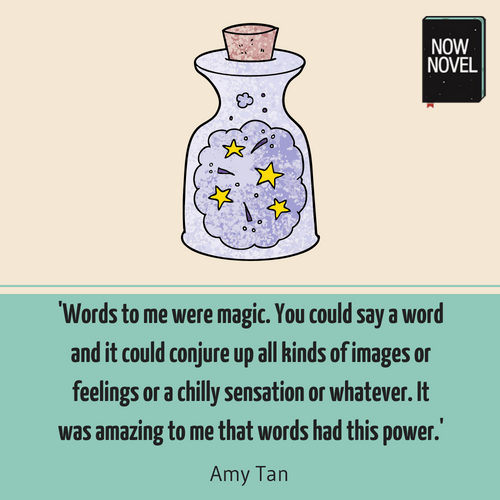
Find fantasy writing prompts on the cost of magic, primary and secondary worlds and more with 200 and counting fantasy starters.
2. Adventure
Adventure in fantasy is common, from bands of travelling, questing heroes (like Frodo and friends in Tolkien's The Lord of the Rings) to girls who fall down magical rabbit holes (Alice in Wonderland).
Adventure in fantasy often features another meaning of magic:
'A quality of being beautiful and delightful in a way that seems remote from daily life.'
Fantasy does indeed often take us to places that seem remote from daily life, full of new joys and discoveries (or dangers). In Frodo's adventures, he finds both the dazzling land of the elves, Lothlorien, and the foul, stinking lands of Mordor where the story's villain resides.
Adventure means 'an unusual and exciting or daring experience', as well as 'excitement associated with danger or the taking of risks.'
Fantasy is full of these elements. Characters take new risks, whether it be riding into battle to confront a mysterious, supernatural foe, or simply trying a magical delicacy in a fantastical sweet shop.
Practical ideas for using this element of fantasy
- Show the dangers of adventure: Fantasy is full of moments of tension and conflict that arise from characters venturing into the unknown. When your character falls down the metaphorical rabbit hole, what dangers and risks do they meet? Alice, in Alice in Wonderland, comes face to face with the Queen of Hearts, for example, who yells about chopping off people's heads.
- Show the joys of adventure: Venturing far from your comfort zone is a great opportunity for personal growth, new friendships (and romances). How do your characters' adventures bring them closer to others?
- Show the gains and losses of change: Adventure in fantasy is full of states of change. In David Eddings' Belgariad, the protagonist Garion grows from a child in Book I to a groom in the final novel, Enchanter's End Game. In Tolkien's famous fantasy cycle, characters return to The Shire to find industrialization threatening the old ways of life.
3. Struggle for mastery
Themes of struggle and mastery are found in many forms throughout many fantasy novels. Part of this is due to fantasy's origins in ideas of arcane, 'special', yet volatile and dangerous knowledge. The initiate often must learn to control the unpredictable surges of 'wild' magic, to trace or utter the 'right' thing to achieve the desired effect.
This process of struggle and mastery is often shown in character development. Sometimes characters use power irresponsibly. For example, a character tries to ruin a magical game of the airborne sport Quidditch in Rowling's fantasy series. Struggle in fantasy fiction includes:
- Struggle for mastery of self: Understanding and using one's own power effectively or wisely
- Conflict between those who use their own magical mastery for positive or destructive ends: We see this in classic 'hero vs villain' fantasy conflicts
Practical ideas for using this element of fantasy
Think about how you can use struggle to develop interesting character arcs and developments:
- Show characters' unique abilities: How is this character's abilities (or strengths in a particular subset of abilities, such as healing or raising the dead) useful? How do they need to develop?
- Show characters' distinct limitations: Just as characters may excel in some areas, they might be woefully terrible in others. Neville Longbottom, in Rowling's series, for example, is a hopeless student generally. Yet he has a natural knack for handling magical plants.
- Show the origins of struggles great and small: Rowling shows us her main villain's youth over the the course of her series, where he went wrong. C.S. Lewis gives us a brief history of Jadis the White Witch's misdeeds. In each case, we develop a sense of what motivates how characters choose to wield their magical power. Why does the tyrant crave world domination, and why does a hero agree to a task they know could prove fatal?
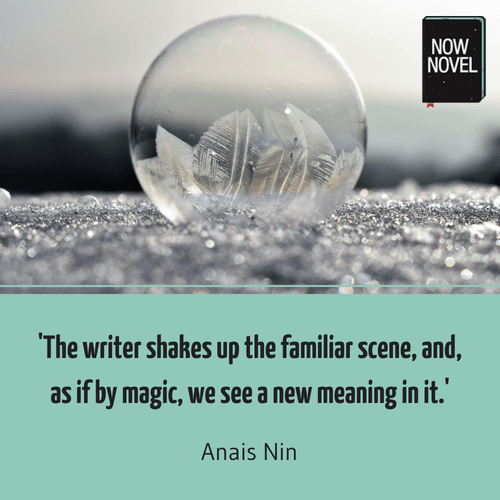
4. Subgenres and types
As with many other large genres of fiction, fantasy has many subgenres and types. You could describe Sir Terry Pratchett's inventive Discworld series as 'comic fantasy' since rather than focusing on dangerous quests only it pokes fun at our world as well as well as genre tendencies. For example, the trope of lavish fantasy world-building. In Discworld, the world is a disc supported by four elephants standing on the back of a giant turtle swimming through space.
Popular fantasy subgenres
- Epic fantasy: Typically explores plots and themes that are 'epic' and sweeping, such as conflicts between good and evil lasting ages
- Dark fantasy: Stories that incorporate horror elements, such as many of Stephen King's books that blend the supernatural, the magical and the macarbre
- Contemporary fantasy: Stories set in our real world that involve magic or other supernatural elements (Harry Potter has this blend of mundane aspects of contemporary life and the magical)
- Urban fantasy: Fantasy fiction where the urban, modern city is the typical setting, rather than a pastoral setting or medieval world of kings and horseback
These are just some of fantasy's popular subgenres. Within each of these subgenres, magic and parallel worlds function in many different ways.
Different types of fantasy
There are also different ways the magical element of fantasy functions. In her book Rhetorics of Fantasy, Farah Mendelsohn defines four core types of fantasy, based on how the non-realistic element of the story appears:
- Portal fantasy: Like in The Lion, the Witch and the Wardrobe or Alice in Wonderland, characters enter a fantastical world through a portal. In C.S. Lewis' series, the portals are magical pools in a wood that lies between worlds, at first. Children are teleported to this world when they try on rings created by a main character's uncle in The Magician's Nephew.
- Immersive fantasy: The reader sees the magical world through the eyes of the protagonist, for whom the world is the only known world. In other words, there is not the note of discovery but rather, we discover through the character's eyes a magical world that's natural to them. Ursula K. Le Guin's Earthsea series is an example.
- Intrusion fantasy: The fantastical or magical aspect intrudes on characters' worlds, and we see how characters navigate this supernatural 'breach'. These stories tend to describe the magical intrusion, rendering its strangeness to the reader. The tales of H.P. Lovecraft are an example.
- Liminal fantasy: This rarer form is where a fantastical element enters characters lives, yet they accept it as completely natural. For example, if a character were to turn into a rhinoceros (like in Eugene Ionesco's play Rhinoceros, in which the inhabitants of a small town turn into rhinoceroses one by one except for one man).
Practical ideas for using subgenres and fantasy types
Subgenres and types of fantasy fiction can supply rich ideas. Read different subgenres and types and use your growing knowledge to:
- Subvert expectations: Readers may have particular expectations of a subgenre or fantasy story type. For example, that a portal is a magic transport between two worlds. What if a portal stops working? Or turns out to not be a portal at all, but a myth to explain a darker truth the rulers of a land want to conceal at all costs?
- Find inspiration: Read in many subgenres and across many types, even if you have favourites. The better you know the fantasy genre, the more you can draw on different elements of fantasy from each.
- Find subplots: Perhaps your story is a portal fantasy, involving travel between worlds. Could their also be an intrusion element? In Narnia, for example, in the first chronological book in the series, one of the main characters accidentally transports the tyrant Jadis back to Earth, to the 'real' world, when she clutches onto him as he goes through a portal.
A fifth key element of fantasy is 'place' or 'setting': The mythical, magical or miraculous landscape where the action takes place:
5. Place/Setting and worldbuilding
Because of its exploration of the otherworldly and the supernatural, place is a key aspect of many fantasy novels. Some places are created through magic. The lion Aslan sings the Kingdom of Narnia into being in C.S. Lewis' lore. (A Christian mythology parallel to the Creation in the Bible.) By contrast, Jadis, the White Witch, destroys a whole world by speaking a powerful word.
In fantasy, we often strongly experience both characters' effects on their world, and their worlds effects and influence on them.
Tolkien, in his fantasy cycle, gives each place its distinctive character. The land of the elves is full of majesty and a timeless sense of peace. The Shire, the home of the hobbits, is full of family histories, pranks and merriment (at the story's start). It's a typical example of intimate, community-based rural life. Mordor is full of volcanic, dark rocks and treacherous terrain.
In fantasy, world-building is an important process, particularly if you want to make your world believable to the reader. Rowling, for example, spares us no detail, from where Wizards buy their wands and do their banking, to how mail is delivered to magic students.
Yet each of these world details is also woven in so that it is relevant to whatever characters are experiencing at the time. Harry's delivery owl Hedwig is a companion to him while adjusting to the strangeness and occasional loneliness of his new surrounds, for example.
How can you use place in your fantasy to make your story truly magical?
Practical ideas for using place in fantasy
To make place in your fantasy immersive:
- Add relevant detail: What fauna and flora are there in your world? What do characters have to do manually because magic can't solve every problem? Think about the small details along with the big things.
- Give places different levels and sources of tension and intrigue: Authors like Rowling use place well because some places are full of discoveries waiting to be made (such as Hogwarts castle, the wizards' school), while others are drab, mundane, yet intriguing by contrast to this world (such as Harry's aunt and uncle's home).
- Know the rules of place in your world: Understanding what characters can and can't do in certain settings, where they may and may not go, helps to place some limits. For example, Rowling creates the Ministry of Magic that penalizes wizards for displays of magic around ordinary, non-magical people (called 'muggles').
There are many more elements of fantasy, yet the above gives a basic overview of common features. Think about power, learning, adventure, and conflict. Give place its own intriguing character. And remember to give your reader reasons to wish, wonder and marvel.



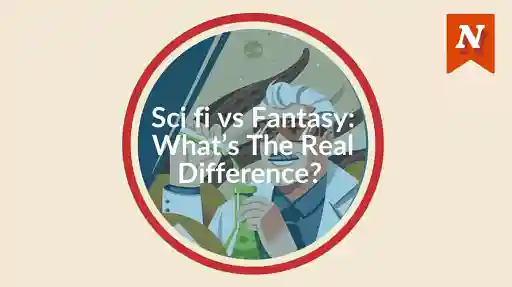
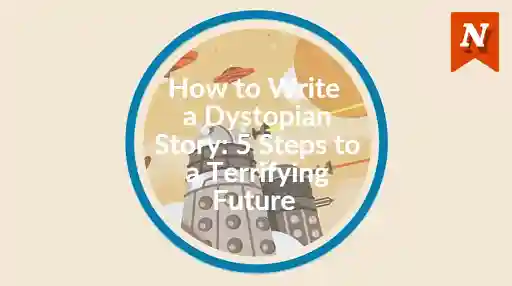

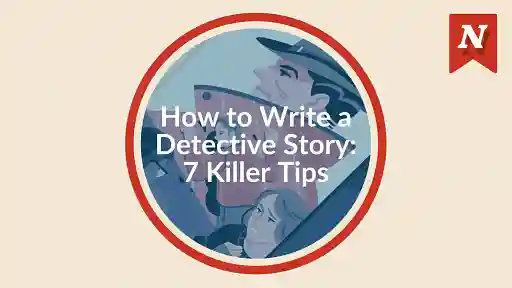
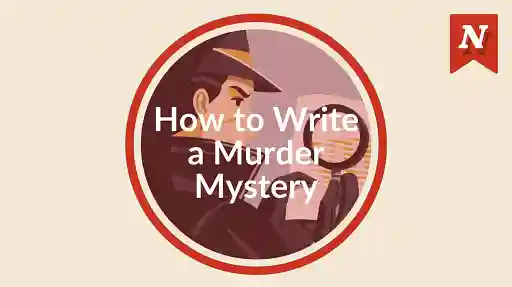


Writing fantasy is hard because you need to make yourself a set of rules.
April - About 7 years ago
This is true, April. It's also what makes it such fun, of course :)
Bridget At Now Novel - About 7 years ago
Well researched article here.What are the major differences between fantasy and magical realism?
Gilbert Mwangi - Almost 7 years ago
Hi Gilbert, thank you! One of the major differences is that 'magical realism' as a literary term refers most often to a group of South American authors such as Gabriel Garcia Marquez who use magical/fantastical elements in otherwise mostly 'realist' fiction set in the 'real' world, whereas fantasy tends to be more wholly fantastical and involves things like worldbuilding, mythical 'lore' (magical powers and beasts, spells, etc.). Here's a good post explaining the differences: https://mastersreview.com/literary-terms-magical-realism-science-fiction-and-fantasy/
Bridget At Now Novel - Almost 7 years ago
I,m gonna make a story about gumball and darwin going to a school and they see strange things happening.
David.M - Over 4 years ago
Hi David, thank you for sharing that. Is Gumball a character from a specific story universe/lore? I haven't heard of them. Good luck with your story!
Jordan - Over 4 years ago
How do I says this...my problem is that I know what I want to write and it’s all in my mind ready but I have no idea how to write it out! Is there a way for you to help me?
Khun - Over 4 years ago
Hi Khun, thank you for sharing that! Happy New Year, too. I would say perhaps write two lines before you sit down to write a scene, outlining what you want to write about or what part of the story you want to tell (if you prefer to not outline your whole story in advance). For example 'First scene: Main character receives the letter that makes them decide to go to visit their uncle'. Creating a little focus this way will help you start writing. Also, give yourself the freedom to just write - there's no 'correct' way to get the words out of your mind and onto the page, other than to write, and to write with a goal, at least some sense of the current purpose and the eventual (possible) destination for this particular story. Good luck!
Jordan - Over 4 years ago
Hello, let me start this off by saying how wonderful this website is. The blogs are great and give a lot of good tips and advice. Now going into my problem, how do I shift a short story into a book? I'm finally attempting shifting from short stories to writing an actual book (it'll be on the shorter side of course since it's my first time), but i'm having trouble making the story longer. It's hard for me to add more scenes that don't directly relate to the main plot. For example, in Harry Potter book six "The Half Blood Prince" the main plot is obviously figuring out who the half blood prince is, but there's still side plots. Like Harry is in love with Ginny and the Quidditch games. I'm not sure how to add extra side plots, to make the story longer, without making it a full on rom-com. Thank you, and have a very nice day.
Bee - Over 4 years ago
Hi Bee, thank you for your kind feedback. We're glad you're enjoying Now Novel! That's a great question. It's tricky to find subplots when you've already written a finished version, I'm sure. Looking at the example you used, Harry Potter, the side plots give some ideas (e.g. a romantic arc for a character who has another main goal, such as Harry and Ginny, or another, secondary goal that has some relation to primary conflicts in the story, such as the enmity between Gryffindor and Slytherin being amplified on the Quidditch pitch). I would say look at your characters' primary goals, for starters, and ask whether there are precursory goals (things they have to achieve first) that could make the passage towards the ultimate goal more fraught with suspense/uncertainty. For example, in many of the individual books of the series, Harry faces off against a lesser antagonist connected to Voldemort, such as Nagini. These individual lesser obstacles give individual segments their own arcs and tensions and mysteries, while leaving the grander/larger arc for the final resolution We also have an article on finding subplot ideas here you may find useful. Please feel free to get involved in our online writing groups where you can also share extracts for feedback.
Jordan - Over 4 years ago
Hello I have been writing a story for over 10 years. I have the odd idea and Iv read so many books and gotten some ideas from those. I just struggle on how to write it all out. I have a few chapters down but I struggle on what to write next, or how to get to the next part. I keep getting writers block. It doesn’t help that throughout this pandemic I just haven’t been able to concentrate. I had the idea of a girl from an orphanage who gets asked to come and work for the royal family as future to the princesses daughter (after her mum was killed by magic). This is a prestigious job and not usually given to people of the lower classes. Hen my main character starts developing magical powers (although she doesn’t know it at first). But magic has been banned in the kingdom so she must hide he powers. She cannot just run away to the kingdom where magic is allowed because the borders have been closed and guarded and it would also be suspicious if she just disappeared. Person from the magical kingdom is sent to kill her before she flames out and kills herself and others but thankfully she has gained enough self control that she is given the chance to leave and told she must escape to the magical kingdom where she will be taught the full extent of her powers. And that’s about as far as I can get. I want to include some sort of peril with blood magic, find a way to escape and I want my character to find out she she was given the job because the queen had an affair and she is actually the queens illegitimate daughter but I have NO clue on how to do these things. Can anyone help with any tips?
Emily - Over 4 years ago
Hi Emily, thank you for sharing that. First off about focus, I think the emotional rollercoaster of the pandemic has made it hard for many people to focus, so don't be too hard on yourself about that. Have you tried learning to meditate? It can really help to empty your mind of other background anxieties and distractions. We also have an article on exercises to get out of writer's block here you may find useful. Regarding your questions about your story, that does sound like many conflicts and intrigues all bundled together. I would suggest separating out each separate incident and asking questions about it. For example, why were the borders closed? Who finds out about your MC being at the castle and thus sends someone to kill her, and why (what is their fear/goal?). If you break the story down into smaller chunks of scenes and incidents and situations and focus on one element at a time, it will be easier to progress, for sure. I hope this helps! Please feel free to get help in our writing groups too, where you can ask other writers questions about your ideas and writing challenges.
Jordan - Over 4 years ago
Excellent article. Thanks for sharing.
Travis Ward - Over 4 years ago
Hi Travis, thank you for your kind feedback and for reading our articles. It's a pleasure!
Jordan - Over 4 years ago